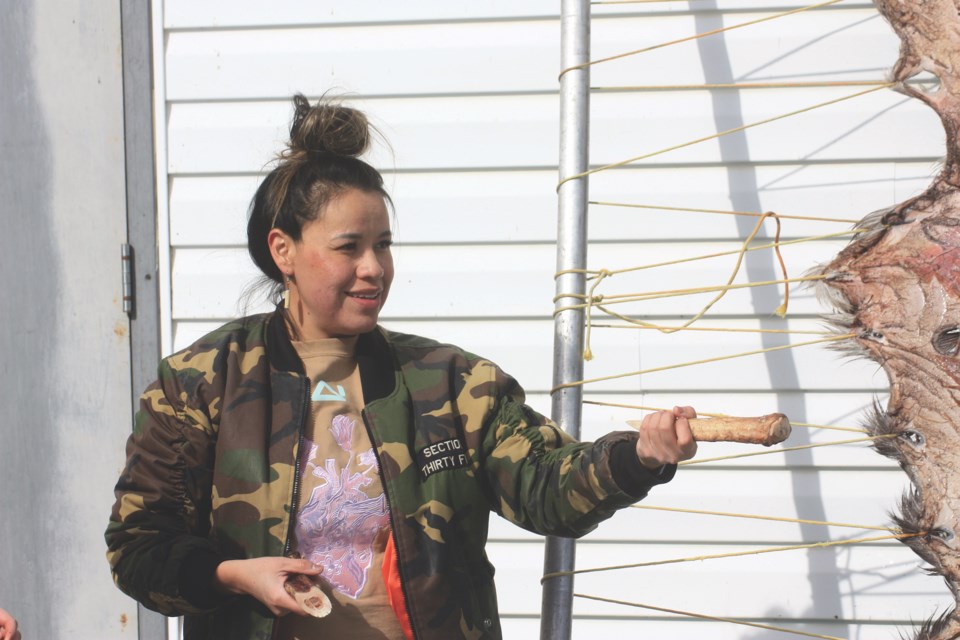ATHABASCA – After a lot of hard work and some money from an Alberta Environment and Protected Areas grant, the first-ever Indigenous Community-based Monitoring Spring Gathering was a “superb success” according to organizer Dr. Lisa Carter.
The event, held March 27-29 at Narrow Lake about 25-minutes south-west of town, brought together elders, Indigenous community members, provincial and federal scientists and members of the provincial government to highlight ways that Indigenous knowledge can be included in the traditionally, western-science-oriented practices of environmental monitoring.
During the conference, Carter said she wanted to hold it in Athabasca, to “give back to the community” as a previous aquatic training event had been held near Cold Lake.
“It went superbly well, there were just so many comments from participants, they were just so happy. It was really interactive. It was really great, just a positive experience for everybody,” said Carter in a March 30 follow-up interview.
Community-based monitoring
Community-based monitoring stems from a memorandum of understanding (MOU) that the provincial and federal governments signed in 2017, which confirmed a joint commitment to establish effective mechanisms for Indigenous participation in the design, implementation, and governance of the Oil Sands Monitoring (OSM) program.
For this to work, Indigenous communities require access to information, training, equipment, and resources related to the program, as well as a facilitation centre in Fort McMurray, according to an April 3 e-mail from Carter. Her hope is that the outreach, and training centre would allow communities to work with western scientists to design, participate and collaborate on the needed work.
The event
Participants spent three days learning about ways that they can integrate the two knowledge systems together to monitor ecosystems more effectively around the oilsands. The first day was focused on building the foundations of Indigenous knowledge; breakout sessions included interactive presentations on natural laws and teachings, moose hide tanning, and a personal presentation by elder Margaret Cardinal called Tipi and Turtle Teachings. Carter said those sessions were intended to “relate how cultural knowledge and practice in environmental management is necessary to the holistic understanding of monitoring processes.”
Day 2 focused on sessions that demonstrated ongoing efforts to build the capacity of communities to provide their own environmental monitoring. Presenters included Lori Cyprien, from Athabasca-Chipewyan First Nation, who showcased an example of an Indigenous-led community-based monitoring program, and Fabian Grey from Whitefish Lake First Nation, who discussed the Nation’s efforts in monitoring local biodiversity.
Why is it important?
Environmental monitoring isn’t a new idea as western science-based monitoring has been around for years, but according to many elders and other strong voices in the Indigenous community it has its flaws.
The gathering was an effort to start to combine the two into a more holistic approach — checking things like pH levels are still important, but the belief is that it will accomplish much more when it’s combined with practices that Indigenous communities have been using for generations.
"We're flipping things over," said Carter. "Normally community based monitoring comes from a Western science-based perspective, and we want to approach it from an Indigenous-based lens."
One of the breakout sessions on the second day of the conference was led by Ronnie “Guitar” Quintal, from Buffalo Lake Métis Settlement, who gave a presentation called “Land Teachings.” In it, he shared the impacts that industry development has had on their traditional foods and medicines, many of which are becoming harder to find as development continues to increase.
What comes next?
Carter says that the plan is for the gathering to become an annual event, but in the meantime she hopes that participants will be able to take what they learned back to their communities and workplaces.
Future conferences are going to include further training on the methods that scientists use to monitor the ecosystems around the oilsands, with Carter highlighting her desire to run a terrestrial (land-based) monitoring training program, like the aquatic session that had been run previously.



